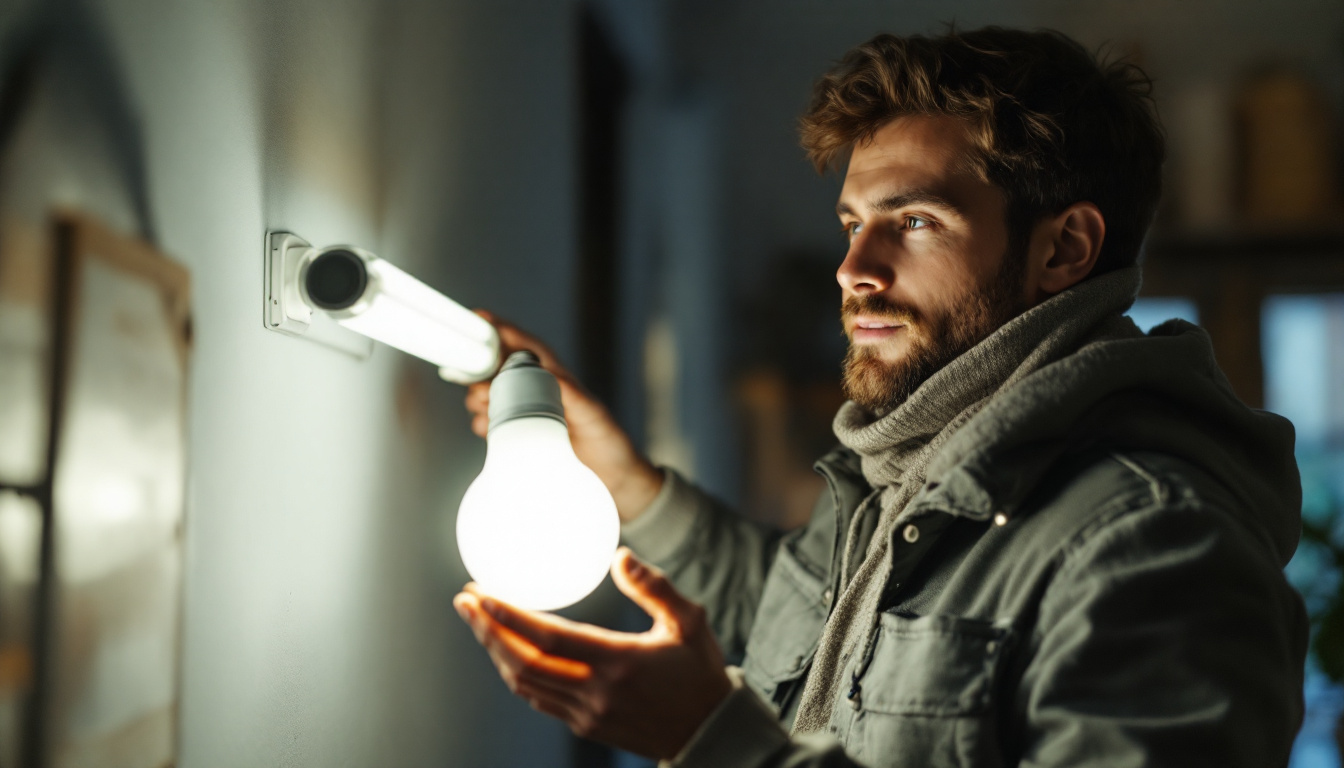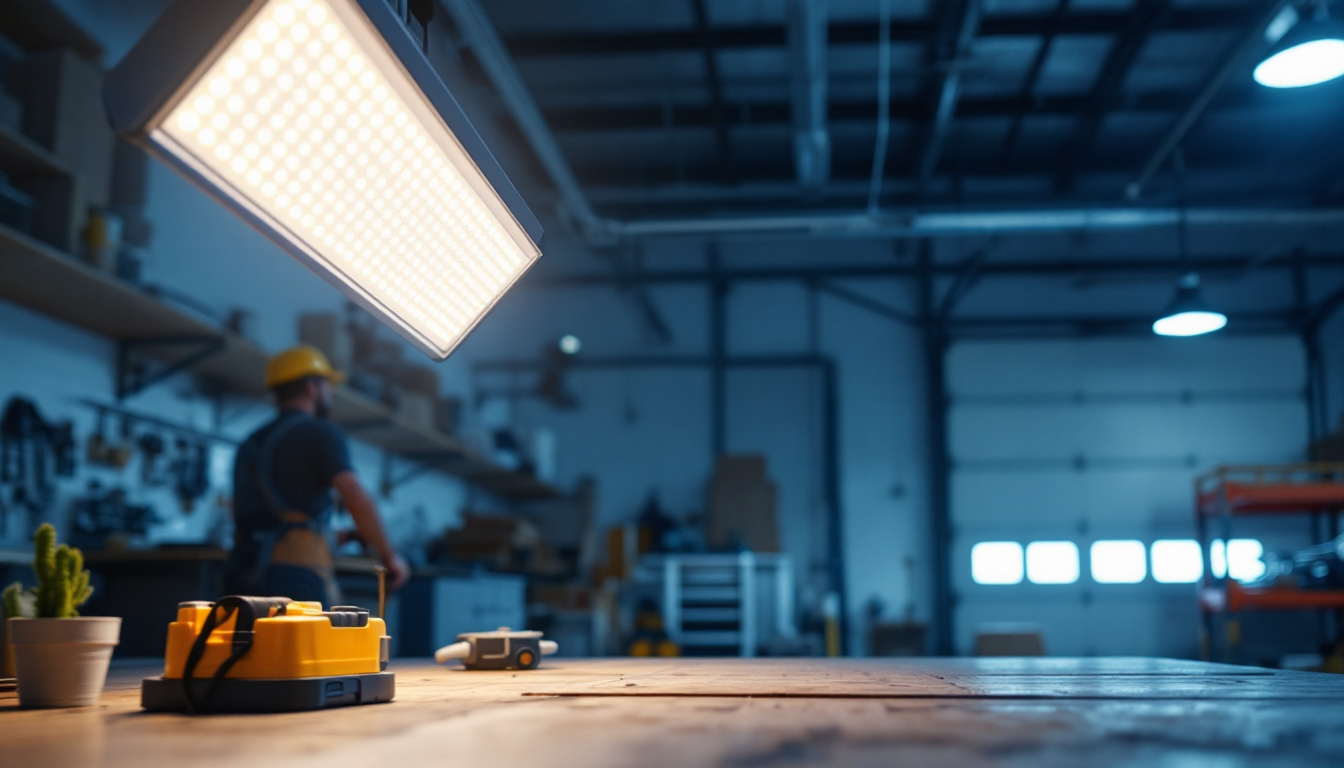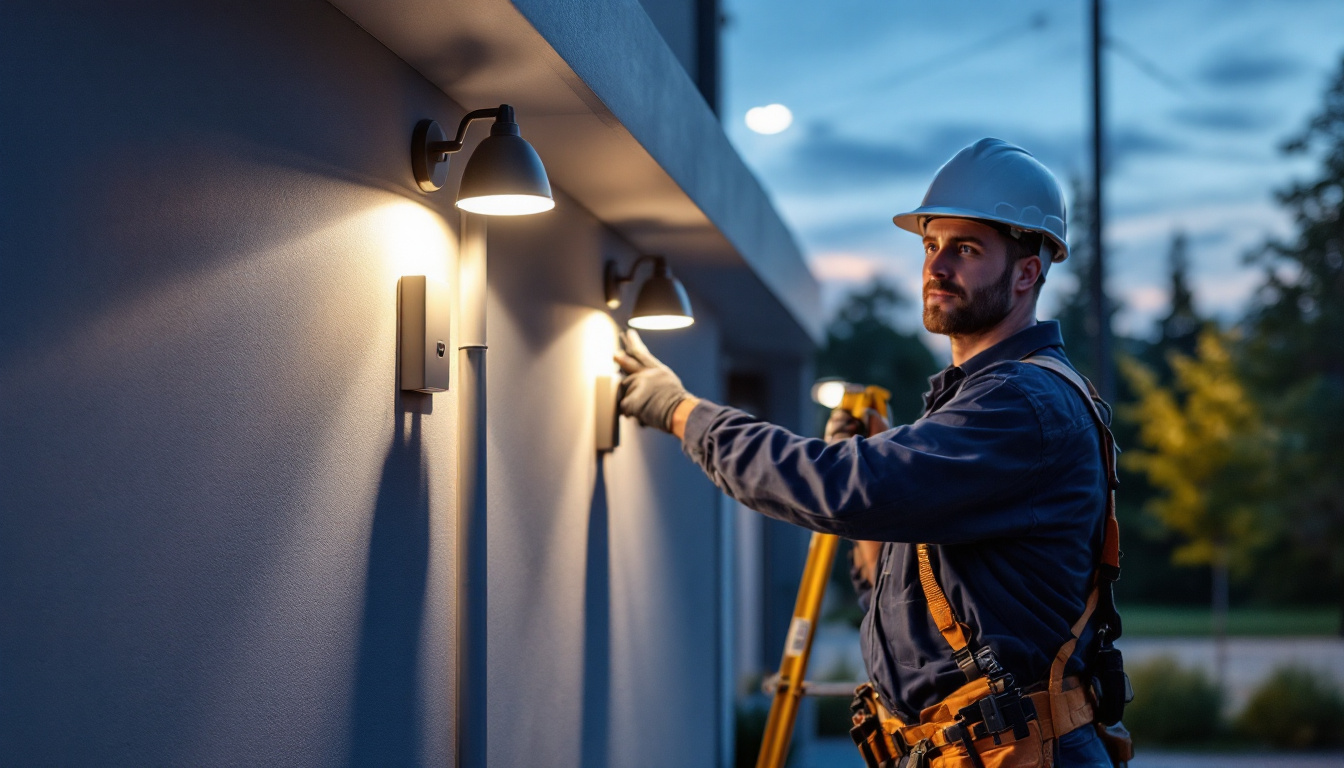
Fluorescent bulbs have long been a staple in both residential and commercial lighting. Their efficiency and longevity make them a preferred choice for many lighting contractors. However, understanding how to properly change these bulbs is crucial not only for maintaining lighting quality but also for optimizing energy efficiency. This article delves into the process of changing fluorescent bulbs and explores the broader implications for energy consumption and sustainability.
Fluorescent bulbs operate by passing an electric current through a gas, which produces ultraviolet light. This light then excites a phosphor coating on the inside of the bulb, emitting visible light. While these bulbs are more energy-efficient than traditional incandescent bulbs, they still require careful handling and replacement. The efficiency of fluorescent bulbs can lead to significant energy savings over time, making them a popular choice for both residential and commercial lighting solutions.
There are several types of fluorescent bulbs, including linear tubes, compact fluorescent lamps (CFLs), and circular bulbs. Each type has its specific application and method of installation. Understanding these differences is essential for any lighting contractor.
Linear tubes are commonly used in commercial settings, such as offices and warehouses, while CFLs are often found in residential applications. Circular bulbs, on the other hand, are less common but can be used in specialized fixtures. Knowing the type of bulb being replaced will inform the changing process and ensure compatibility with existing fixtures. Furthermore, advancements in fluorescent technology have led to the development of high-output and low-profile options, catering to a variety of lighting needs and aesthetic preferences.
Before changing a fluorescent bulb, it is vital to take safety precautions. Always turn off the power to the fixture at the circuit breaker to prevent electrical shock. Additionally, allow the bulb to cool down if it has been in use, as fluorescent bulbs can become quite hot during operation.
Using gloves can also be beneficial, as it prevents oils from the skin from transferring to the bulb, which can affect its performance. If the bulb breaks, handling the shards carefully is crucial to avoid injury. In such cases, it is advisable to use a broom and dustpan for cleanup rather than your hands, and to dispose of the broken bulb properly, as fluorescent bulbs contain small amounts of mercury, which can be hazardous to health and the environment. Many localities offer recycling programs specifically for fluorescent bulbs, ensuring safe disposal and minimizing environmental impact.
Changing a fluorescent bulb can be a straightforward process when approached methodically. Here’s a step-by-step guide to ensure a successful replacement.
Before starting, gather the necessary tools and materials. This typically includes a replacement bulb, gloves, and a ladder if the fixture is out of reach. Having everything on hand will streamline the process and minimize the risk of accidents.
Additionally, consider wearing safety goggles to protect your eyes from any potential debris, especially if the bulb is old or has been in place for a long time. A drop cloth can also be useful to catch any small pieces that may fall during the removal process, particularly if you are dealing with a broken bulb. Being prepared not only enhances safety but also makes the task more efficient.
Once safety measures are in place, it’s time to remove the old bulb. For linear tubes, gently twist the bulb to release it from the socket. For CFLs, simply unscrew the bulb from its base. Be cautious not to apply too much force, as this could lead to breakage.
For circular bulbs, the process may involve pressing a release tab or rotating the bulb to unlock it from its fixture. Always consult the fixture’s manual if unsure of the removal process. If the bulb is broken, carefully use a pair of pliers to grip the base and twist it out, ensuring that you are wearing gloves to protect your hands from sharp edges. Dispose of the old bulb properly, as fluorescent bulbs contain materials that can be harmful to the environment.
After the old bulb is removed, it’s time to install the new one. Align the pins of the new bulb with the sockets and push or twist it into place, depending on the type of bulb. Ensure it is securely fitted to avoid flickering or failure.
Once the new bulb is in place, turn the power back on and test the fixture to confirm that the new bulb is functioning correctly. If it does not light up, double-check the installation to ensure it is seated properly. It’s also wise to inspect the fixture for any signs of wear or damage that could affect the performance of the new bulb. Regular maintenance of lighting fixtures can extend their lifespan and improve energy efficiency, making it a good practice to incorporate into your home upkeep routine.
Fluorescent bulbs are known for their energy efficiency, consuming significantly less power than incandescent bulbs. However, understanding the broader implications of energy efficiency is vital for lighting contractors and their clients.
When comparing fluorescent bulbs to incandescent options, the differences in energy consumption are stark. Fluorescent bulbs can use up to 75% less energy than their incandescent counterparts. This reduction in energy usage not only lowers electricity bills but also reduces the carbon footprint associated with energy production.
For contractors, this knowledge can be a selling point when advising clients on lighting solutions. Highlighting the long-term savings and environmental benefits of switching to fluorescent lighting can lead to more informed decisions and increased customer satisfaction.
Another aspect of energy efficiency is the longevity of fluorescent bulbs. Typically, these bulbs last around 10,000 hours or more, significantly outlasting incandescent bulbs, which may only last about 1,000 hours. This longevity translates to fewer replacements, reducing waste and the environmental impact of manufacturing and disposing of bulbs.
Regular maintenance and timely replacements are essential to ensure that lighting systems operate at peak efficiency. Contractors should encourage clients to monitor the performance of their fluorescent bulbs and replace them as needed to maintain optimal lighting conditions.
Advancements in lighting technology continue to enhance the energy efficiency of fluorescent bulbs. Innovations such as electronic ballasts and improved phosphor coatings have made modern fluorescent bulbs even more efficient than their predecessors.
Electronic ballasts are a significant improvement over traditional magnetic ballasts. They provide a more stable current to the bulb, resulting in better performance and reduced energy consumption. Additionally, electronic ballasts can eliminate flickering and improve the overall quality of light.
For contractors, recommending fixtures that utilize electronic ballasts can be a great way to enhance energy efficiency in commercial settings. This technology not only improves lighting quality but also contributes to lower energy costs over time.
While fluorescent bulbs remain a popular choice, the rise of LED technology presents an even more energy-efficient alternative. LEDs consume even less power and have a longer lifespan than fluorescent bulbs, making them an increasingly attractive option for both residential and commercial applications.
Lighting contractors should stay informed about these alternatives and be prepared to offer clients a range of options. Educating clients on the benefits of LED technology, including lower energy costs and reduced environmental impact, can help them make informed decisions that align with their sustainability goals.
As energy efficiency becomes a more pressing concern, the environmental impact of lighting choices cannot be overlooked. Fluorescent bulbs contain small amounts of mercury, which requires careful disposal to prevent environmental contamination.
Contractors should educate clients about the importance of proper disposal methods for fluorescent bulbs. Many communities offer recycling programs specifically for fluorescent bulbs, allowing for safe disposal and recovery of materials. Encouraging clients to participate in these programs can help mitigate the environmental impact of their lighting choices.
Additionally, contractors can advocate for the use of energy-efficient lighting solutions that minimize environmental harm. By promoting sustainable practices, contractors can position themselves as leaders in the industry and contribute to a healthier planet.
Staying compliant with local regulations regarding lighting and energy efficiency is essential for contractors. Many regions have implemented standards that encourage or require the use of energy-efficient lighting solutions. Familiarizing oneself with these regulations can help contractors guide clients in making compliant and sustainable choices.
Moreover, being knowledgeable about energy efficiency standards can enhance a contractor’s credibility and reputation in the industry. Clients are more likely to trust professionals who are well-versed in current regulations and best practices.
Changing a fluorescent bulb may seem like a simple task, but it carries significant implications for energy efficiency and environmental sustainability. By understanding the proper methods for replacing bulbs, the benefits of energy-efficient lighting, and the importance of responsible disposal, lighting contractors can provide valuable services to their clients.
As technology continues to evolve, staying informed about advancements in lighting solutions will be crucial. Whether it’s advocating for electronic ballasts, exploring LED options, or ensuring compliance with regulations, contractors play a vital role in promoting energy efficiency in the lighting industry.
Ultimately, the impact of changing a fluorescent bulb extends beyond mere illumination; it encompasses a commitment to sustainability and responsible energy consumption. By embracing these principles, lighting contractors can contribute to a brighter, more energy-efficient future.
Ready to elevate your lighting game and drive energy efficiency forward? LumenWholesale is your trusted partner, offering an extensive selection of spec-grade lighting products at unbeatable wholesale prices. Say goodbye to middleman markups and hello to premium, cost-effective solutions for every project. With free shipping on bulk orders, you can stock up on high-quality fluorescent bulbs and the latest LED alternatives, ensuring your projects shine with sustainability and savings. Don’t compromise on quality or value—explore our wholesale lighting options today and light up your work with the best in the business.

Discover expert tips and strategies for lighting contractors to master the installation and optimization of 4′ LED shop light fixtures.

Discover the essential guide to outdoor wall lights for houses, tailored for lighting contractors.

Discover the essential techniques and insider tips for mastering 3-way switch installations with our comprehensive guide tailored for lighting contractors.

Discover how offering outdoor lighting security solutions can boost your business as a lighting contractor.